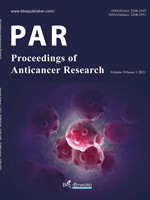Abstract
Radix Astragali seu Hedysari is warm in nature and slightly sweet in taste. It belongs to the lung, spleen, and kidney meridians. It passes through a waterway, dredges the triple energizer, and has a significant effect on edema due to renal diseases. Ancient doctors believed that Radix Astragali seu Hedysari is excellent in tonifying the middle, supplementing Qi, and dredging through the triple energizer. In modern times, many doctors have found that whether it is used as a single drug or in combination with other drugs, it is widely used in clinical practice and has a good effect in inducing diuresis.
References
Tao HJ, 2013, Supplementary Records of Famous Physicians, China Press of Traditional Chinese Medicine, Beijing, 60-61.
Jin LDY, 2012, Li Dongyuan’s Medical Encyclopedia, Shanxi Science and Technology Publishing House, Tiayuan, 370.
Zou S, 2013, Evidence of the Sutra, China Press of Traditional Chinese Medicine, Beijing, 74-76.
Lu YT, 2010, Medical Talk in Cold Room, People’s Military Medical Press, Beijing, 98-99.
(Qing) Zhang BC, 1957, The Herb to Read, Shanghai Health Publishing House, Shanghai, 05.
Chinese Academy of Traditional Chinese Medicine, 2013, Yue Meizhong’s Traditional Chinese Medicine Collection, People’s Medical Publishing House, Beijing, 25.
Zhang XC, 1985, Records of Tradition Chinese and Western Medicine in Combination, Hebei Science & Technology Press, Shijiazhuang, 09.
Chinese Academy of Traditional Chinese Medicine, 2013, Medical Cases of Pu Fuzhou, People’s Medical Publishing House, Beijing, 110.
National Pharmacopoeia Commission, 2010, Pharmacopoeia of the People’s Republic of China, China Medical Science Press, Beijing, 1019-1020.
Qing Lu YT, Lv ZL, 1999, Medical Talk in Cold Room, Ancient Chinese Medicine Books Publishing House, Beijing, 108.
Meng QY, 2006, The inscription of Map of The Study of The Scriptures in The Autumn Room – Zhongan Lu Curing Hu Shi’s Diabetes. Chinese Medical Culture, 1(3): 32-33.
Zhejiang Institute of Traditional Chinese Medicine, Ningbo Chinese Medicine Society, Zhejiang Province, 1986, Selected Academic Experience of Famous Modern Doctors: Wenfu Fan Album, People’s Medical Publishing House, Beijing, 148-149.
Ma J, Chen XZ, Wang Y, 2012, Clinical Observation of Radix Astragali seu Hedysari Combined with Western Medicine in Treatment of Hypertensive Renal Injury Edema. Chinese Journal of Basic Medicine in Traditional Chinese Medicine, 18(08): 879-880.
Li WL, Li X, 2007, Clinical Observation of Tonifying the Spleen and Tonifying the Kidney in Treating 40 cases of Diabetic Renal Edema. Journal of Hebei Medical College for Continuing Education, (02): 40.
Lu R, Tong ZW, Yang CM, et al., 2015, Clinical Observation of 60 cases of Diabetic Nephrotic Edema Treated by Astragalus Injection Combined with Low Molecular Weight Heparin Calcium. Yunnan Journal of Traditional Chinese Medicine and Materia Medica, 36(05): 54-55.
Nie JT, 2017, Effect of Tetrandra and Astragalus Decoction on 24h Urinary Protein, Serum Albumin and Blood Lipid in Patients with Primary Nephrotic Syndrome at Edema Stage. Journal of Clinical Medicine in Practice, 21(01): 48-51.
Lin J, 2017, Effect of Tetrandra and Astragalus Decoction on Primary Nephrotic Syndrome Edema Stage. Chinese Journal of Modern Drug Application, 11(19): 119-120.
